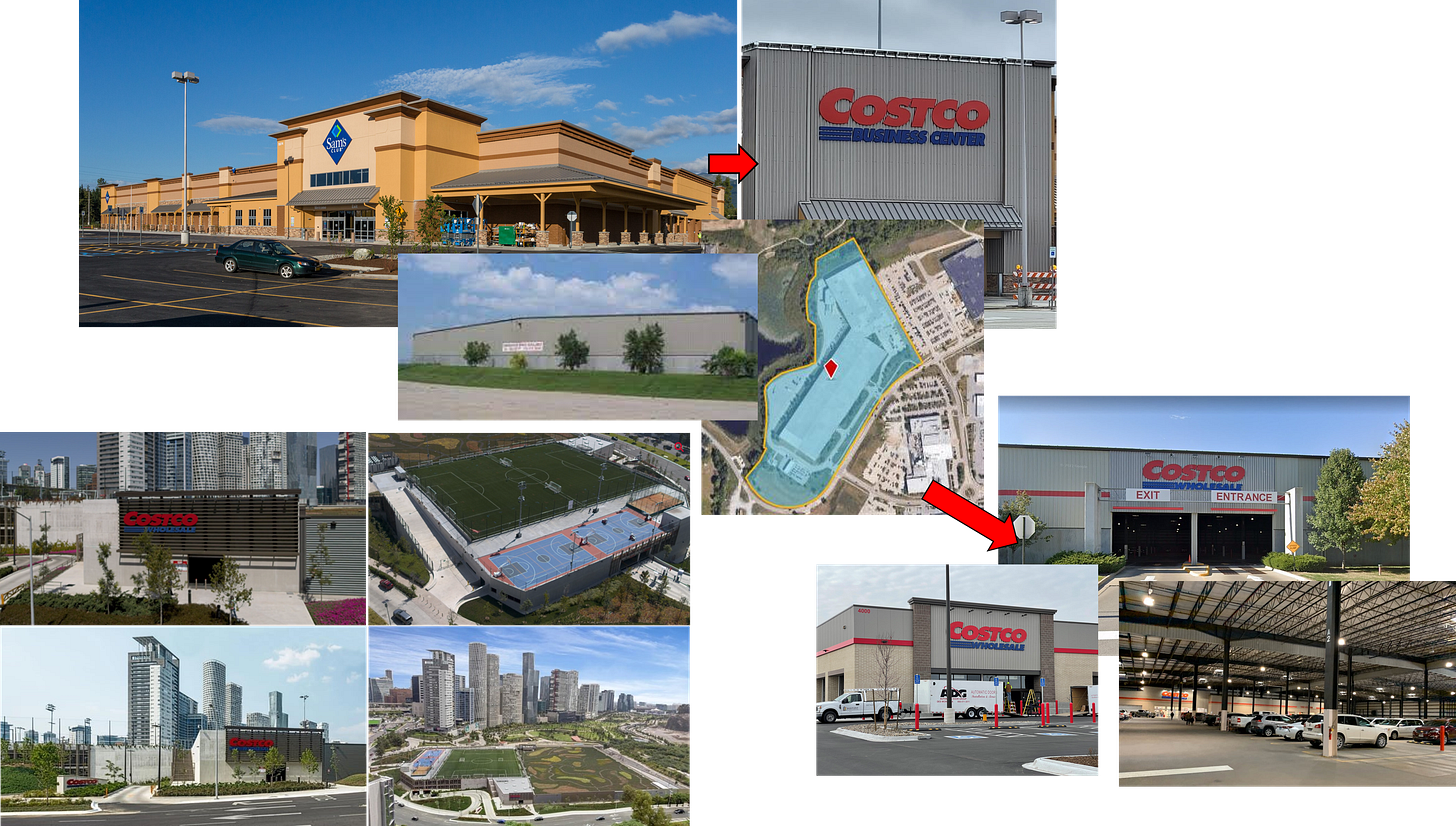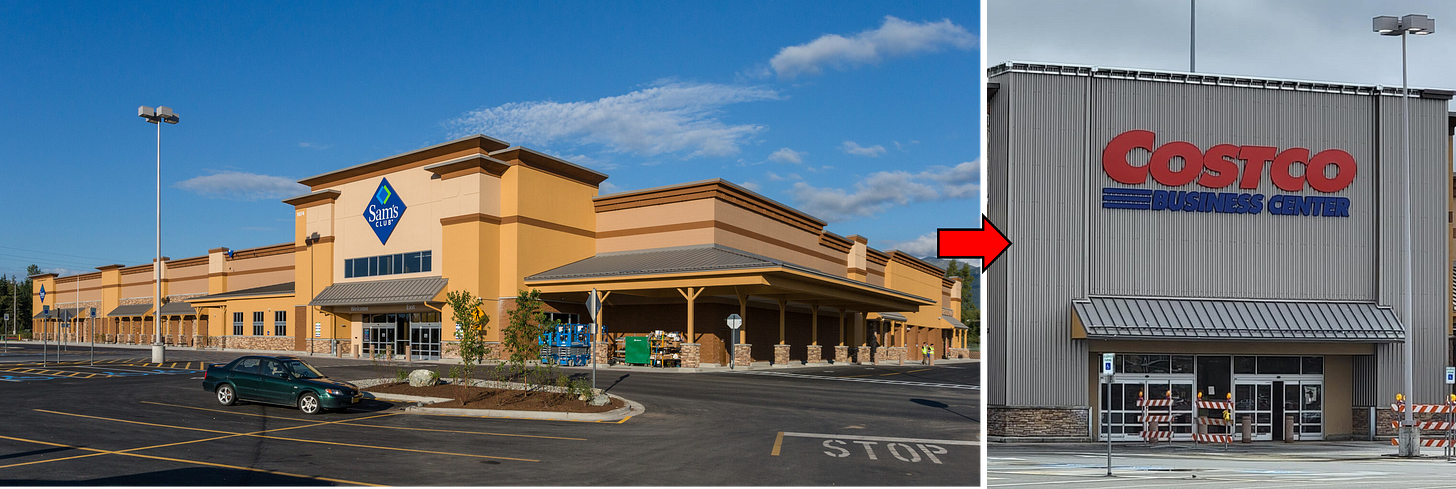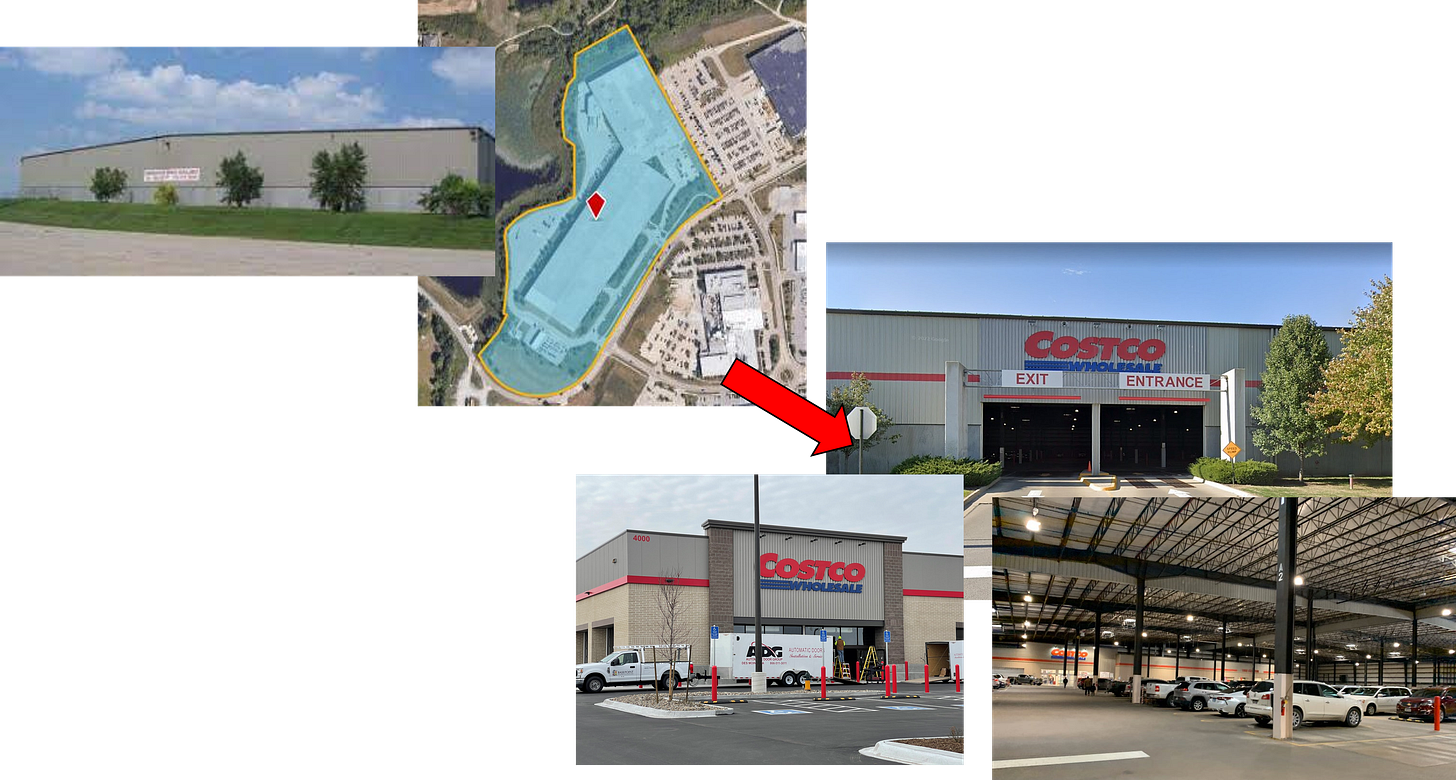3 Unique Costco Warehouse Clubs That Are The Product of Adaptive Reuse
There are currently 860 Costco warehouse clubs worldwide.
And Costco is planning to open approximately two dozen additional clubs in 2024.
But while Costco typically develops its standard ~150,000 square foot warehouse club by building new from the ground up, it has on occasion repurposed existing buildings and sites.
Although few in number across the chain, these adaptive reuse Costco clubs include reuse of real estate vacated by competitors, a rare industrial-to-retail building conversion and a unique brownfield redevelopment that resulted in a truly one-of-a-kind Costco site.
Using Real Estate Vacated by Competitors to Quickly Grow A New Concept
One of Costco’s newest locations is a warehouse in Anchorage, Alaska.
But unlike a standard Costco warehouse club, the new site is a Costco Business Center.
It is still open to all Costco members but don't expect to find clothing, electronics or home and garden products at this location.
A Costco Business Center instead primarily sells office supplies, commercial appliances and larger quantity food and grocery items designed to serve restaurants.
In fact more than 70% of products at a Costco Business Center are different than those offered at a standard club store.
And unlike a typical club that Costco develops new and builds from ground up, this site in Anchorage is an adaptive reuse of a former ~140,000 square foot Sam's Club that closed in 2018.
Costco entered into a lease with the building owner and spent approximately $5 MM to develop a small building addition, do facade work and reorient the parking area.
As a result Costco was able to open much sooner than would have been possible had it instead built a brand new club from the ground-up.
Even though the Costco Business Center concept represents just a small number of the chain’s club stores - less than 30 as of the end of 2023 - at least 3 of Costco’s other Business Center clubs are also conversions of former Sam’s Club warehouses.
An Industrial-to-Retail Building Conversion
Vacant industrial buildings are rarely converted into a retail use.
But that did not stop Costco form converting a former Amana refrigerator distribution center in Iowa into a club store back in 2012.
The ~138,000 square foot Costco club store in Coralville, Iowa was developed by repurposing a large portion of the former Amana industrial building.
But instead of tearing down the rest of the building (which is connected at an oblique angle), Costco created driveway entrances and turned it into a 600 space indoor parking area and 5,000 square foot tire center.
Costco's plan to reuse the entire vacant building enabled it to secure unanimous approval from City Council at its site plan and rezoning hearing.
And it is rumored that Costco saved roughly $1 MM by converting part of the building into a garage rather than demolishing it to create a conventional parking lot.
A Unique Costco Brownfield Redevelopment
While not technically an adaptive reuse of an existing building, the warehouse club that Costco developed in Mexico City's Santa Fe neighborhood is a repurpose and rehabilitation of a “brownfield” property.
After all, it was built on the site of a former sand quarry and landfill.
The ~230,000 square foot Costco warehouse - its largest in Mexico - sits below a ~70 acre public park and greenspace.
In fact only one side of the building is exposed to the public.
The remaining walls, parking structure and loading bays are hidden from public view.
Soccer fields, basketball courts and jogging paths sit atop the Costco parking structure - and the roof of the Costco club is essentially an extension of the city park.
The building's green roof collects stormwater runoff and directs it to the park's fountains and ponds and an onsite filtration system utilizes reclaimed water for the club’s operational use.
The end result is a multifaceted, multipurpose building and site that not only is home to a successful Costco warehouse club but also includes vast amounts of public and community space and represents a truly unique redevelopment of a brownfield site.







